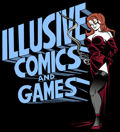Orson Scott Card's
Red Prophet #1 and 2 My
personal rule of adaptations is always see the adaptation
first, because they’re never as good as the original.
Ever.
The
Red Prophet book-to-comic adaptation, while no
exception to my rule, is still pretty sweet, and doesn’t
let the devoted reader down. I’m a longtime Orson
Scott Card fan (ah, Ender’s Game, how I love
thee) and I read the Alvin Maker series (Red Prophet
is Book 2 - editor) a few months back. I was amazed
by how little was lost in the transition. But first, the
story:
Red
Prophet takes place in a slightly alternate pioneer-era
American history, where folk magic is real and a common
part of life. When a ne’er-do-well whisky-runner,
a corrupt governor and an idealistic soldier-lawyer converge
at a pioneer outpost, you would think the combination would
be dangerous enough, wouldn’t you?
Of course
not! Card has to add in a powerful Indian who’s seriously
upset about white settling and his drunken brother. Before
the last page, the bootlegger’s been jailed, the governor’s
been bribed, the drunk has stolen a keg of whisky and the
other two are raring to start a war against each other.
Keep in mind that this was only Part One.
Part Two gives us backstory on the drunken Indian, a one-eyed
would-be shaman named Lolla-Wossiky. Explained mostly through
his brother, the powerful brave Ta-Kumsaw, we see why Lolla-Wossiky
drinks and why he can get away with it. Armed with his stolen
liquor, Lolla-Wossiky heads north to find his spirit animal,
instead running into a small town with a hypocrite preacher
and a small boy who just might be what the wandering Indian
is seeking.
 |
The writer, Roland Bernard Brown (personally
selected by Card) did an amazing job of capturing the feeling
of the time: “men were men, and smelled like horses.”
The dialogue and narration are so authentically written
that you find yourself thinking in whatever accent the narrator
uses. The different styles for each speaker work well, and
add a certain personalized tone that you would expect to
get lost in translation. Brown plays with the plot well,
keeping enough of the subtlety and humor of the original
to keep the adaptation engrossing.
Card also adds in the occasional cameo by
historical figures– something I found particularly
satisfying in the original, and that other history buffs
will probably enjoy, too. (If you’re the type who
tended to doze through those long lectures, don’t
fret – you don’t need to know who Bill Harrison
was, it just makes it more satisfying if you do.)
The
art is classic – the style would fit as easily into
Illustrated Classics as it would into an entire comic. Renato
Arlem adds some grit to give Card’s world a certain
rough-and-tumble dustiness while still keeping the lines
clean. Though a little exaggerated and occasionally overpolished,
Arlem does a pretty good job of keeping it real.
Bottom
line: This comic should certainly draw in established Card
fans, and turn newcomers toward the original book. Brown
and Arlem made the novel-to-graphic novel jump with definite
style, and they have definite potential to turn this series
into a gem.
|







